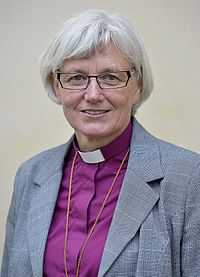Church of Hindia Belanda
 Church of Hindia Belanda | |
|---|---|
| Gereja Hindia Belanda Nederlands Indische Kerk | |
| Classification | Protestantism |
| Orientation | Lutheranism |
| Polity | Episcopal |
| Primate | Archbishop Ella Atmokartodjo of Buitenzorg |
| Region | Hindia Belanda |
| Language | Indonesian, Dutch, English |
| Liturgy | Nusantaran rite |
| Headquarters | Cathedral of Buitenzorg |
| Separated from | Protestantse Kerk in Noordenstaat |
| Members | 36.3 million |
The Church of Hindia Belanda (Indonesian: Gereja Hindia Belanda; Dutch: Nederlands Indische Kerk) is the largest Christian church in the Commonwealth of Hindia Belanda, with over 36 million members or 30% of the total Hindia Belandan population. It is the second largest religious denomination in the country after Esoteric Shi'ism. From the early 17th century until the late 18th century, it was the only allowed Christian church in the Colony of Hindia Belanda, due to a strong anti-Catholic sentiment amongst the colonial administrators who predominantly belonged to the Protestantse Kerk in Noordenstaat.
As an episcopal church professing the Lutheran branch of Protestantism, it maintains the historical episcopate and is considered a high church, having retained the Mass and the traditional use of liturgical vestments as well as claiming apostolic succession. The church is divided into 23 dioceses, of which only one — the Archdiocese of Buitenzorg — has the status of an archdiocese due to being the seat of the Primate of the Church of Hindia Belanda, who is currently Archbishop Ella Atmokartodjo.
History
Company rule (1580 to 1800)

Formerly known as the Protestantse Kerk in Nederlands Indië before the independence of Hindia Belanda in 1929, the church began life in the 1580s as a division of the Protestantse Kerk in Noordenstaat and as such was modelled on its mother church in most aspects, whilst concurrently reflecting its subordinate status as a church that catered to the Noordenstaater Trading Company and its various officials, employees and soldiers.
After the expulsion of the Empire of Exponent from its few colonial holdings in the Hindia Belandan archipelago, which were largely limited to forts, trading posts and monasteries, the Noordenstaater Trading Company successfully established a presence in the port city of Jacatra, which it renamed as Batavia (modern-day Jakarta), where a catholic Diocese of Jacatra had been created by the Exponents. The Company subsequently usurped the diocese into the new Protestantse Kerk in Nederlands Indië, whilst keeping not only crucifixes and iconography but also Catholic liturgical traditions and vestments. Being a subordinate church to its mother church in Noordenstaat, the Protestantse Kerk in Nederlands Indië was treated as part of the Company and the clerics considered its salaried employees and thus were subservient to the Noordenstaater Trading Company.
As the territorial extent of the Noordenstaater Trading Company in the Hindia Belandan archipelago was, at the beginning, limited to the port city of Jacatra as well as the few forts and trading posts previously owned by the Exponents, for most of its early years the Protestantse Kerk in Nederlands Indië remained a small, insignificant church whose congregants were those who worked for the Company. The church did not enjoy the same independence as its mother church’s, as evidenced by the presence of Company officials at the annual Batavia Synods that took place between 1590 and 1750. No ecclesiastical regulations could be introduced without the expressed permission of the Company administrators in Batavia, nor might the clergy could correspond with the mother church in Noordenstaat without the Company’s approval. The Company had so much influence over the church that even trivial matters such as the content, frequency and the hours of sermons were established by the Governor-General’s decree in council (Raad van Indië).
To further solidify the Company’s control over the church, it made the Batavia Synod part of the Company’s upper hierarchy, giving the Company administrators greater leeway to do as it pleased to the church’s political structures. Through the Batavia Synod, the Company held the power to appoint ordained ministers to parishes, violating a fundament of the Lutheran movement whereby the parish’s right to call its own minister is sacrosanct. On some occasions, as Company documents attest, the Company even overrode the decision of the Batavia Synods, sometimes even going as far as appointing the clergy without the synod’s involvement. Most notably, for instance, Governor-General Aldert Gerardus Specx of the Noordenstaater Trading Company was able to decide who the church must exclude from partaking in communion, denying the Governor-General’s personal adversaries in the colony the means of grace according to the church’s teachings. The politicisation of the church would endure until the mid 1750s.
An exception to this autocratic system was made to the Diocese of Jacatra, whose bishop is appointed directly by the Protestantse Kerk in Noordenstaat.
Colonial Hindia Belanda (1800 to 1929)
Liberalisation
Theology
Church politics and structure
Primate
The Primate of the Church of Hindia Belanda is

